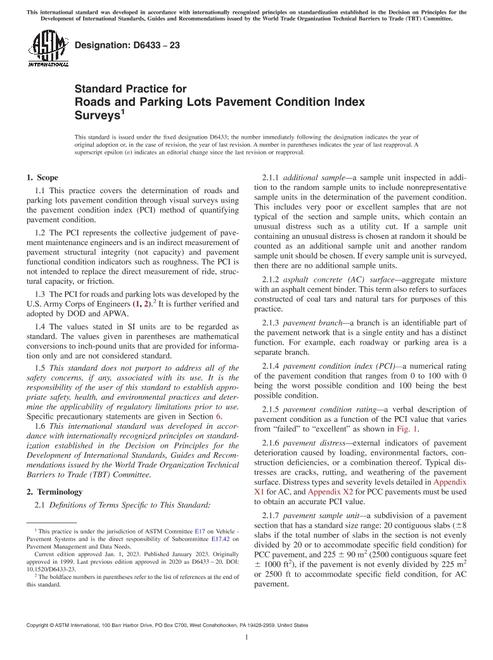-
-
Available Formats
- Availability
- Priced From ( in USD )
-
Available Formats
-
- Immediate download
- $52.00
- Add to Cart
-
- Printed Edition
- Ships in 1-2 business days
- $52.00
- Add to Cart
Customers Who Bought This Also Bought
-

ASTM D6433-23
Priced From $89.00 -

ASTM D1752-18(2023)
Priced From $50.00 -

ASTM D546-17
Priced From $42.00 -

ASTM D7174-05(2022)
Priced From $48.00
About This Item
Full Description
1.1 These test methods cover the physical properties associated with preformed expansion joint fillers. The test methods include:
| Property | Section |
| Asphalt content | 7.5 |
| Boiling in hydrochloric acid | 7.4 |
| Compression | 7.2 |
| Density | 7.7 |
| Expansion in boiling water | 7.1 |
| Extrusion | 7.3 |
| Recovery | 7.2 |
| Water absorption | 7.6 |
1.2 The values stated in inch-pound are to be regarded as standard.
Note 1 - Specific test methods are applicable only to certain types of joint fillers, as stated herein.
1.3 This standard does not purport to address all of the safety concerns, if any, associated with its use. It is the responsibility of the user of this standard to consult and establish appropriate safety and health practices and determine the applicability of regulatory limitations prior to use.
Document History
-
ASTM D545-23
Standard Test Methods for Preformed Expansion Joint Fillers for Concrete Construction (Nonextruding and Resilient Types)- Most Recent
-
ASTM D545-19
Standard Test Methods for Preformed Expansion Joint Fillers for Concrete Construction (Nonextruding and Resilient Types)- Historical Version
-
ASTM D545-14
Standard Test Methods for Preformed Expansion Joint Fillers for Concrete Construction (Nonextruding and Resilient Types)- Historical Version
-
ASTM D545-08
Standard Test Methods for Preformed Expansion Joint Fillers for Concrete Construction (Nonextruding and Resilient Types)- Historical Version
-
ASTM D545-99(2005)
currently
viewing
Standard Test Methods for Preformed Expansion Joint Fillers for Concrete Construction (Nonextruding and Resilient Types)- Historical Version
-
ASTM D545-99
Standard Test Methods for Preformed Expansion Joint Fillers for Concrete Construction (Nonextruding and Resilient Types)- Historical Version





